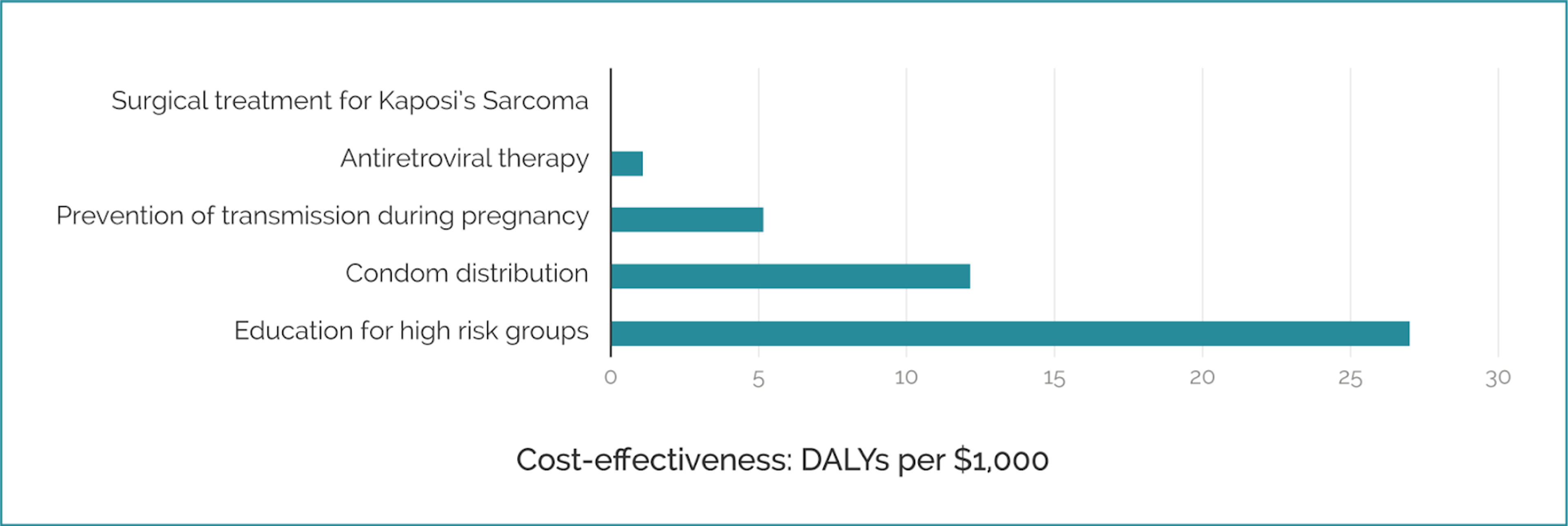Effective giving outreach/education
Most of us care about doing good. When we see suffering and injustice, we feel compelled to act. Quite often, however, it's not obvious what we should do, or how we should do it.
Where we choose to donate is just one example of this problem. If we care deeply about reducing suffering for the hundreds of millions of people facing global poverty, what should we do about it? There are so many organisations working on this issue that it can feel overwhelming to decide who is most worthy of our charitable donations.
Effective altruism (EA) provides an answer to this difficult problem: we should use high-quality evidence and critical reasoning to find the best ways to help others.
Let's imagine that we want to reduce the suffering caused by HIV/AIDS. Where should we donate our money if we want to help as much as possible? There are a number of organisations working in this space, with many possible interventions to choose from.
To illustrate why it's important to support the most effective organisations, see the figure below. This graph ranks HIV/AIDS interventions on the number of healthy life years saved, measured in disability-adjusted life years, per $1,000 donated. As seen by the graph, some interventions are much more cost effective in producing good outcomes. For example, education for high-risk groups performs 1,400 times better than surgical treatment for Kaposi's Sarcoma, a common intervention in wealthy countries. We should focus our efforts on the most cost-effective intervention in order to have the greatest impact in reducing HIV/AIDS-related suffering.

This is just one example of the difficult choice we're faced with whenever we want to donate to charitable organisations. Without evidence-backed research and analysis, it's extremely challenging for individuals to confidently understand the best ways to address the world's most pressing problems.
To tackle this, organisations promote effective giving — through charity evaluation and research — to encourage people to donate to organisations that are capable of doing the most good.
What are some examples of effective giving outreach/education?
In general, we can think of effective giving outreach as having two key components:
- Identifying effective giving opportunities, as done by grantmakers and charity evaluators.
- Fundraising and advocacy for these giving opportunities, as done by fundraising organisations, effective giving infrastructure, and charity evaluators.
Note that many of the example organisations below do a mix of these activities, but are particularly good examples for certain activities.
Charity evaluators
- Charity evaluators use high-quality evidence, reasoning, and rigorous analysis to produce recommendations on the most effective charities to donate to.
- Examples: GiveWell, Animal Charity Evaluators, Giving Green
Grantmakers
- Grantmakers identify effective giving opportunities and support them by distributing funds.
- Examples: Founders Pledge, EA Funds, Open Philanthropy
Fundraising organisations
- Fundraising organisations encourage more people to give to highly effective charities to maximise the potential impact of their donations. These can be targeted to a specific community of people, such as athletes, or more broadly to the general public.
- Examples: Giving What We Can, High Impact Athletes
Effective giving infrastructure
- Other projects do effective giving outreach and education by utilising matched-funding opportunities or empowering donors with tax-efficient donation opportunities.
- Examples: EA Giving Tuesday, RC Forward, Rethink Charity
What are the best charities, organisations, and funds in this area?
You can donate to several promising programs working in this area via our donation platform. For our charity and fund recommendations, see our best charities page.
Our research
This page was written by James Ozden. You can read our research notes to learn more about the work that went into this page.
Your feedback
Please help us improve our work — let us know what you thought of this page and suggest improvements using our content feedback form.